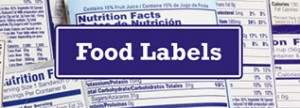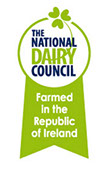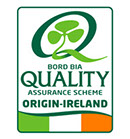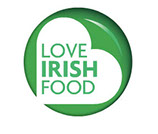The Irish Food Writers Guild believes that: “All labelling in Ireland should be transparent, legible, unambiguous, truthful and in plain English to enable consumers to make informed choices”As food labelling is currently a serious source of confusion for consumers, the Guild is endeavouring to assist the public to make more informed choices, through the Labelling guidelines and checklist, given below, and further information, compiled by Guild member Ross Golden-Bannon, which is is available on the Guild website
Further information will be posted as it becomes available.
Labelling guidelines and checklist
Compiled by Guild member, Dee Laffan
The Irish Food Writers Guild has created this quick guide as a resource and checklist for consumers to help make more informed choices when shopping for groceries.
While labels are obviously added to food to offer further knowledge about origin, traceability, production, lifespan and nutritional content, this information can often be difficult to understand because of the way in which it is presented and there are currently no legally agreed definitions. There are some common misinterpretations and terminology within these headings that are worth learning so that you will be better equipped to ask questions about the food you choose to purchase and consume.
Questions to think about when reading labels…
What does it claim to be?
- A product is “low fat” when it contains less than 3g fat in 100g.
- A product is “reduced fat or light” if it contains 25% less fat than the standard version of the product.
- A product is “low sugar” if it has less than 5g of sugar per 100g.
- If a product has “no added sugar” on it then no sugars have been added but the product may still contain natural sugars.
- A product is “high fibre” if it contains at least 6g of fibre.
- If a product is “sugar free” it may not have any sugar, but it may have added sweeteners.
What does the nutritional information mean?
- Nutritional information must be displayed on the back of packaging and breaks down the energy, fat, carbohydrate, sugar, fibre, salt and protein in a product and per 100g.
- The calorie content of a product is always displayed as ‘energy’.
- Most products display Front of Pack (FoP) labelling of per serving Guideline Daily Amount (GDA) in respect of that product, as well as the full nutritional breakdown on the back or side of the packet.
- Be aware that FoP GDAs can be misleading. Check how many servings the product is claiming to include. The nutritional information will be broken down by this amount to achieve the ‘per serving’ GDA.
What ingredients does it contain?
- Ingredients lists will not contain amounts, but they are always listed from the greatest amount added to least.
- Note how many ingredients are on the label. If you are buying a product that you know should only have three ingredients, but has at least 10, perhaps look closer at what else is included to make a more informed choice.
- Processed food can often include hidden sweeteners, salt and additives as they are using an alternative name. See the glossary below to familiarize yourself with these.
Where was the product made?
- Not all foods have to carry their country of origin. Under EU food labelling law foods that must are: raw beef and veal; raw poultry meat from a third country; fruit, vegetables; and honey.
- The exception to this rule is if the absence of the country of origin misleads the consumer to think it is Irish. For example, if the name of a product was an Irish word, but it was made outside of Ireland, it would have to carry the country of origin.
- If a product states that it is a “product of Ireland”, it does not mean that it is produced in Ireland. The meat may be from outside the country, but simply processed and packaged here.
- Look for symbols from the following companies on products to indicate their authenticity:
Bord Bia
Glossary of labelling terms
This is just a short list of ingredients and terms that we feel are important to know when reading labels. We will update this list on a regular basis and if you feel there are any terms you wish to be added, please contact Dee Laffan at deelaffan@gmail.com.
• Best before date – an advisory date only, refers to the quality of the product.
• Display until date – used by supermarkets to help keep track of stock.
• Monosodium glutamate – MSG, is a flavour enhancer added to foods.
• Sell by date – used by supermarkets to help keep track of stock.
• Sorbitol – a sugar alcohol, used as a bulk sweetener in many food products.
• Sugar – synonyms found on labels: Sucrose, Maltose, Dextrose, Fructose, Glucose, Galactose, Lactose, High fructose corn syrup, Glucose solids, Cane juice, Dehydrated cane juice, Cane juice solids, Cane juice crystals, Dextrin, Maltodextrin, Dextran, Barley malt, Beet sugar, Corn syrup, Corn syrup solids, Caramel, Buttered syrup, Carob syrup, Brown sugar, Date sugar, Malt syrup, Diatase, Diatastic malt, Fruit juice, Fruit juice concentrate, Dehydrated fruit juice, Fruit juice crystals, Golden syrup, Turbinado, Sorghum syrup, Refiner’s syrup, Ethyl maltol, Maple syrup, and Yellow sugar.
• Use by date – Food that has a use-by date are usually perishable and are not 100% safe to be eaten after this date.
• Xylitol – sugar alcohol, artificial sweetener also found in a lot of foods.













